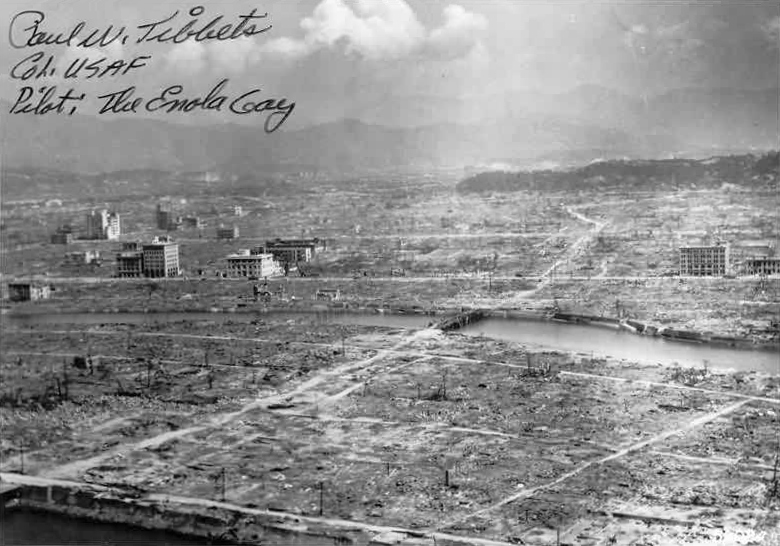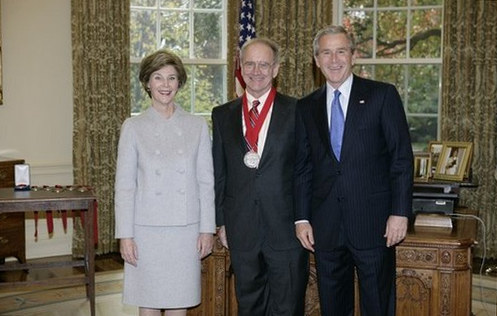|
Pax Atomica
Pax Atomica (Latin for “Atomic Peace”) is one of the terms that has sometimes been used to describe the period of severe tensions without a major military conflict between the United States and the Soviet Union during the Cold War. The term is also at times used to describe the entire post World War II/ post-atomic-bomb era.Chicken Pax Atomica: The Cold War Stability of Nuclear Deterrence. By James Pasley. Journal of International and Area Studies. Vol. 15, No. 2, December 2008. Pg. 21. In the phrase's narrower application, applying only to the Cold War era, the phrase refers to the argument that the stability between the two superpowers was caused by each side's large nuclear arsenals which led to a state of Mutually Assured Destruction (MAD) and deterrence.Selassie, Bereket H. ''Eritrea and the United States''. The Red Sea Press, 1989, p. 2. That is, if one of the superpowers would have launched a nuclear attack, the other would have responded in the same way. This th ... [...More Info...] [...Related Items...] OR: [Wikipedia] [Google] [Baidu] |
Latin
Latin ( or ) is a classical language belonging to the Italic languages, Italic branch of the Indo-European languages. Latin was originally spoken by the Latins (Italic tribe), Latins in Latium (now known as Lazio), the lower Tiber area around Rome, Italy. Through the expansion of the Roman Republic, it became the dominant language in the Italian Peninsula and subsequently throughout the Roman Empire. It has greatly influenced many languages, Latin influence in English, including English, having contributed List of Latin words with English derivatives, many words to the English lexicon, particularly after the Christianity in Anglo-Saxon England, Christianization of the Anglo-Saxons and the Norman Conquest. Latin Root (linguistics), roots appear frequently in the technical vocabulary used by fields such as theology, List of Latin and Greek words commonly used in systematic names, the sciences, List of medical roots, suffixes and prefixes, medicine, and List of Latin legal terms ... [...More Info...] [...Related Items...] OR: [Wikipedia] [Google] [Baidu] |
United States
The United States of America (USA), also known as the United States (U.S.) or America, is a country primarily located in North America. It is a federal republic of 50 U.S. state, states and a federal capital district, Washington, D.C. The 48 contiguous states border Canada to the north and Mexico to the south, with the semi-exclave of Alaska in the northwest and the archipelago of Hawaii in the Pacific Ocean. The United States asserts sovereignty over five Territories of the United States, major island territories and United States Minor Outlying Islands, various uninhabited islands in Oceania and the Caribbean. It is a megadiverse country, with the world's List of countries and dependencies by area, third-largest land area and List of countries and dependencies by population, third-largest population, exceeding 340 million. Its three Metropolitan statistical areas by population, largest metropolitan areas are New York metropolitan area, New York, Greater Los Angeles, Los Angel ... [...More Info...] [...Related Items...] OR: [Wikipedia] [Google] [Baidu] |
Soviet Union
The Union of Soviet Socialist Republics. (USSR), commonly known as the Soviet Union, was a List of former transcontinental countries#Since 1700, transcontinental country that spanned much of Eurasia from 1922 until Dissolution of the Soviet Union, it dissolved in 1991. During its existence, it was the list of countries and dependencies by area, largest country by area, extending across Time in Russia, eleven time zones and sharing Geography of the Soviet Union#Borders and neighbors, borders with twelve countries, and the List of countries and dependencies by population, third-most populous country. An overall successor to the Russian Empire, it was nominally organized as a federal union of Republics of the Soviet Union, national republics, the largest and most populous of which was the Russian SFSR. In practice, Government of the Soviet Union, its government and Economy of the Soviet Union, economy were Soviet-type economic planning, highly centralized. As a one-party state go ... [...More Info...] [...Related Items...] OR: [Wikipedia] [Google] [Baidu] |
Cold War
The Cold War was a period of global Geopolitics, geopolitical rivalry between the United States (US) and the Soviet Union (USSR) and their respective allies, the capitalist Western Bloc and communist Eastern Bloc, which lasted from 1947 until the dissolution of the Soviet Union in 1991. The term ''Cold war (term), cold war'' is used because there was no direct fighting between the two superpowers, though each supported opposing sides in regional conflicts known as proxy wars. In addition to the struggle for ideological and economic influence and an arms race in both conventional and Nuclear arms race, nuclear weapons, the Cold War was expressed through technological rivalries such as the Space Race, espionage, propaganda campaigns, Economic sanctions, embargoes, and sports diplomacy. After the end of World War II in 1945, during which the US and USSR had been allies, the USSR installed satellite state, satellite governments in its occupied territories in Eastern Europe and N ... [...More Info...] [...Related Items...] OR: [Wikipedia] [Google] [Baidu] |
World War II
World War II or the Second World War (1 September 1939 – 2 September 1945) was a World war, global conflict between two coalitions: the Allies of World War II, Allies and the Axis powers. World War II by country, Nearly all of the world's countries participated, with many nations mobilising all resources in pursuit of total war. Tanks in World War II, Tanks and Air warfare of World War II, aircraft played major roles, enabling the strategic bombing of cities and delivery of the Atomic bombings of Hiroshima and Nagasaki, first and only nuclear weapons ever used in war. World War II is the List of wars by death toll, deadliest conflict in history, causing World War II casualties, the death of 70 to 85 million people, more than half of whom were civilians. Millions died in genocides, including the Holocaust, and by massacres, starvation, and disease. After the Allied victory, Allied-occupied Germany, Germany, Allied-occupied Austria, Austria, Occupation of Japan, Japan, a ... [...More Info...] [...Related Items...] OR: [Wikipedia] [Google] [Baidu] |
Nuclear Weapons
A nuclear weapon is an explosive device that derives its destructive force from nuclear reactions, either fission (fission or atomic bomb) or a combination of fission and fusion reactions (thermonuclear weapon), producing a nuclear explosion. Both bomb types release large quantities of energy from relatively small amounts of matter. Nuclear bombs have had yields between 10 tons (the W54) and 50 megatons for the Tsar Bomba (see TNT equivalent). Yields in the low kilotons can devastate cities. A thermonuclear weapon weighing as little as can release energy equal to more than 1.2 megatons of TNT (5.0 PJ). Apart from the blast, effects of nuclear weapons include firestorms, extreme heat and ionizing radiation, radioactive nuclear fallout, an electromagnetic pulse, and a radar blackout. The first nuclear weapons were developed by the Allied Manhattan Project during World War II. Their production continues to require a large scientific and industrial complex, primarily ... [...More Info...] [...Related Items...] OR: [Wikipedia] [Google] [Baidu] |
Mutually Assured Destruction
Mutual assured destruction (MAD) is a doctrine of military strategy and national security policy which posits that a full-scale use of nuclear weapons by an attacker on a nuclear-armed defender with second-strike capabilities would result in the complete annihilation of both the attacker and the defender. It is based on the theory of rational deterrence, which holds that the threat of using strong weapons against the enemy prevents the enemy's use of those same weapons. The strategy is a form of Nash equilibrium in which, once armed, neither side has any incentive to initiate a conflict or to disarm. The result may be a nuclear peace, in which the presence of nuclear weapons decreases the risk of crisis escalation, since parties will seek to avoid situations that could lead to the use of nuclear weapons. Proponents of nuclear peace theory therefore believe that controlled nuclear proliferation may be beneficial for global stability. Critics argue that nuclear proliferation i ... [...More Info...] [...Related Items...] OR: [Wikipedia] [Google] [Baidu] |
Deterrence Theory
Deterrence theory refers to the scholarship and practice of how threats of using force by one party can convince another party to refrain from initiating some other course of action. The topic gained increased prominence as a military strategy during the Cold War with regard to the use of nuclear weapons and is related to but distinct from the concept of mutual assured destruction, according to which a full-scale nuclear attack on a power with second-strike capability would devastate both parties. The central problem of deterrence revolves around how to credibly threaten military action or nuclear punishment on the adversary despite its costs to the deterrer. Deterrence in an international relations context is the application of deterrence theory to avoid conflict. Deterrence is widely defined as any use of threats (implicit or explicit) or limited force intended to dissuade an actor from taking an action (i.e. maintain the status quo). Deterrence is unlike compellence, which ... [...More Info...] [...Related Items...] OR: [Wikipedia] [Google] [Baidu] |
John Lewis Gaddis
John Lewis Gaddis (born April 2, 1941) is an American Cold War historian, political scientist, and writer. He is the Robert A. Lovett Professor of Military and Naval History at Yale University. He is best known for his work on the Cold War and grand strategy, and he has been hailed as the "Dean of Cold War Historians" by ''The New York Times''. Gaddis is also the official biographer of the prominent 20th-century American diplomat and historian George F. Kennan. '' George F. Kennan: An American Life'' (2011), his biography of Kennan, won the 2012 Pulitzer Prize for Biography or Autobiography. Biography Gaddis attended the University of Texas at Austin, receiving his BA in 1963, MA in 1965, and PhD in 1968, the latter under the direction of Robert Divine. Gaddis then taught briefly at Indiana University Southeast, before joining Ohio University in 1969. At Ohio, he founded and directed the Contemporary History Institute, and was named a distinguished professor in 1983. In ... [...More Info...] [...Related Items...] OR: [Wikipedia] [Google] [Baidu] |
Long Peace
The "Long Peace" is a term for the unprecedented historical period of relative global stability following the end of World War II in 1945 to the present day. The period of the Cold War (1947–1991) was marked by the absence of major wars between the superpowers of the period, the United States and the Soviet Union. John Lewis Gaddis first used the term in 1986, stressing that the period of "relative peace" has twice outlasted the interwar period by now. The Cold War, with all its rivalries, anxieties and unquestionable dangers, has produced the longest period of stability in relations among the great powers that the world has known in the 20th century; it now compares favorably as well with some of the longest periods of great-power stability in all of modern history. The Long Peace has been compared to the relatively-long stability of the Roman Empire, the Pax Romana, or the Pax Britannica, a century of relative peace that existed between the end of the Napoleonic Wars in 1815 a ... [...More Info...] [...Related Items...] OR: [Wikipedia] [Google] [Baidu] |
Pax Romana
The (Latin for ) is a roughly 200-year-long period of Roman history that is identified as a golden age of increased and sustained Roman imperialism, relative peace and order, prosperous stability, hegemonic power, and regional expansion, although the period also featured a number of revolts and wars, including the Roman-Persian wars. Traditionally, the onset is understood to be the ascent of Augustus, who also founded the Roman principate, in 27 BCE. Conversely, the end of the era is considered as 180 CE with the death of Marcus Aurelius, the last of the "Five Good Emperors". During this approximately two century period, the Roman Empire achieved its greatest territorial extent in CE 117 (Emperor Trajan). Also, the empire had a peak population of 70 million people, accounting for 33% of the world's population. According to Cassius Dio, the dictatorial reign of Commodus, later followed by the Year of the Five Emperors and the Crisis of the Third Century, marked the des ... [...More Info...] [...Related Items...] OR: [Wikipedia] [Google] [Baidu] |
Roman Age
In modern historiography, ancient Rome is the Roman people, Roman civilisation from the founding of Rome, founding of the Italian city of Rome in the 8th century BC to the Fall of the Western Roman Empire, collapse of the Western Roman Empire in the 5th century AD. It encompasses the Roman Kingdom (753–509 BC), the Roman Republic (50927 BC), and the Roman Empire (27 BC476 AD) until the fall of the western empire. Ancient Rome began as an Italic peoples, Italic settlement, traditionally dated to 753 BC, beside the River Tiber in the Italian peninsula. The settlement grew into the city and polity of Rome, and came to control its neighbours through a combination of treaties and military strength. It eventually controlled the Italian Peninsula, assimilating the Greece, Greek culture of southern Italy (Magna Graecia) and the Etruscans, Etruscan culture, and then became the dominant power in the Mediterranean region and parts of Europe. At its hei ... [...More Info...] [...Related Items...] OR: [Wikipedia] [Google] [Baidu] |







